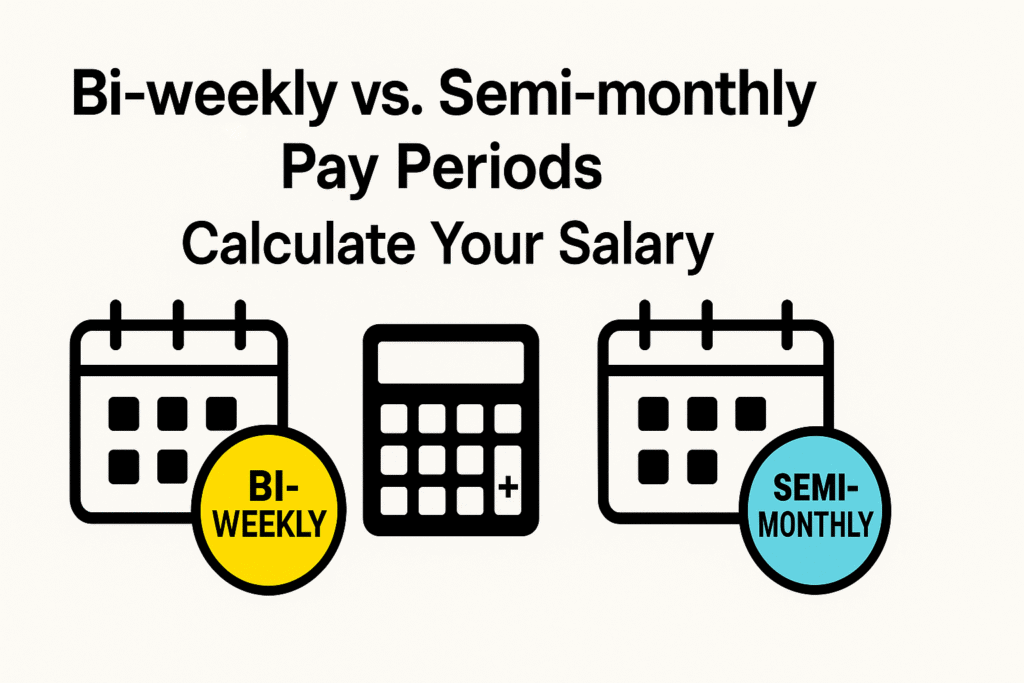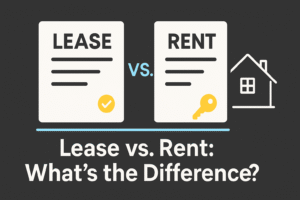Bi‑weekly vs. Semi‑monthly Pay: Understanding the Differences
Last updated: August 2024

Pay period schedules can affect how you handle money each month. Whether you’re an employee trying to calculate your salary or an employer managing payroll, knowing the difference between bi-weekly vs semi-monthly pay can help you plan better and follow finance laws.
This guide is useful for workers and companies in the United States, United Kingdom, and Canada.
What Are Bi‑weekly and Semi‑monthly Pay Periods?
Bi-weekly pay means you get paid every two weeks, giving you 26 paychecks each year. Semi-monthly pay means you get paid twice a month—usually on the 15th and last day—totalling 24 checks per year.
The difference may seem small, but it changes when you get your money and how your employer handles payments and deductions.
Key Differences Between Bi‑weekly vs Semi‑monthly Pay
Frequency & Number of Paychecks
Bi-weekly pay gives you two more checks per year than semi-monthly. These extra checks can help with saving or covering extra expenses.
Impact on Monthly Budgeting
Semi-monthly pay happens on the same days each month, which helps if you have regular bills. Bi-weekly pay days change but sometimes give you an extra paycheck in a month.
Weekend & Holiday Impacts
If payday falls on a weekend or holiday:
- Semi-monthly pay may come early or late.
- Bi-weekly pay usually sticks to the same weekday, such as every other Friday.
Payroll Processing for Employers
Bi-weekly pay means more payroll steps each year (26 vs. 24). Employers face more work, which can raise admin costs.
How to Calculate Your Salary by Pay Period
Here’s how to break down your annual income into paycheck amounts in different countries.
United States Salary Breakdown Examples
Sample annual salary: $72,000.
- Bi-weekly: $72,000 ÷ 26 = $2,769.23 per check
- Semi-monthly: $72,000 ÷ 24 = $3,000.00 per check
UK Salary Breakdown Examples
Sample annual salary: £36,000.
- Bi-weekly: £36,000 ÷ 26 = £1,384.62
- Semi-monthly: £36,000 ÷ 24 = £1,500.00
Canada Salary Breakdown Examples
Sample annual salary: CA$60,000.
- Bi-weekly: CA$60,000 ÷ 26 = CA$2,307.69
- Semi-monthly: CA$60,000 ÷ 24 = CA$2,500.00
Which Pay Schedule Is Better for You?
Pros and Cons for Employees
- Bi-weekly: Matches well with weekly bills; some months have 3 checks.
- Semi-monthly: Easier for managing monthly expenses but may land near weekends or holidays.
Pros and Cons for Employers
- Bi-weekly: More pay runs adds work and cost.
- Semi-monthly: Fewer pay runs, but harder to track hours if staff are hourly.
Salary Calculator by Pay Period
Manual Calculation Method
Use this formula:
Annual Salary ÷ Number of Pay Periods = Gross Paycheck
Online Tools and Resources
Compliance Snapshot
- Formatting or redacting financial information is legal if clearly explained and used for compliance or privacy, such as for loan or housing forms.
- Changing pay amounts, dates, or names on pay stubs or financial papers is illegal in the US, UK, and Canada.
- Need valid proof of income editing? We provide legal formats for official purposes.
Scenarios: How Your Pay Schedule Affects Real-Life Decisions
Mortgage Loan Applications
Lenders may prefer bi-weekly paychecks for regular income tracking. Need guidance? See our page on bank statement formatting.
Rent Agreements
Fixed rent due every month is easier to plan using a semi-monthly paycheck schedule.
Budgeting & Debt Repayment
If you budget weekly, bi-weekly pay helps. For monthly bills, semi-monthly pay is steadier.
Pay Periods and Financial Documentation
When Formatting Documents Is Lawful
It’s okay to adjust documents for things like visas or housing—as long as you don’t lie. We offer legal proof of income editing.
Why Redacting Is Sometimes Necessary
You may need to remove private data (like employee IDs) based on who will use the documents.
What Crosses the Legal Line
Changing numbers or dates to show false income is a crime. Tax agencies in the US (IRS), UK (HMRC), and Canada (CRA) check for this closely.
Related Entities & Terms
- Pay cycle
- Net pay
- Gross salary
- Payday regulations
- Payroll tax
- Direct deposit schedules
- PAYE (UK)
- CRA standards (Canada)
- IRS documentation
- Proof of income
- Maternity leave pay
- Loan underwriting
Final Thoughts
No matter your pay schedule, it’s important to know how it affects your money. For any official documents—like a loan, rental, or visa—follow legal formatting rules.
Want to know more about our process or full service list? Visit our pricing page or contact us.
Need accurate, reliable financial documents fast? Contact FinancialDocsProvider.com now.
FAQ
- Is bi-weekly or semi-monthly pay better?
- It depends on how you plan your money. Bi-weekly is helpful for weekly budgets, while semi-monthly works for monthly bills.
- How many pay periods are in a year for bi-weekly pay?
- You get 26 bi-weekly paychecks in one year.
- Can I switch from semi-monthly to bi-weekly pay?
- Usually, only your employer can make that change. It depends on how their payroll is set up.
- How do I calculate my salary by pay period?
- Divide your yearly salary by: 26 for bi-weekly, 24 for semi-monthly. Use official tax sites for exact numbers.
- Is it legal to edit my pay stub for clarity?
- Yes, if it’s only formatting and truthfully done. Changing actual numbers is illegal and could be fraud.








Add comment